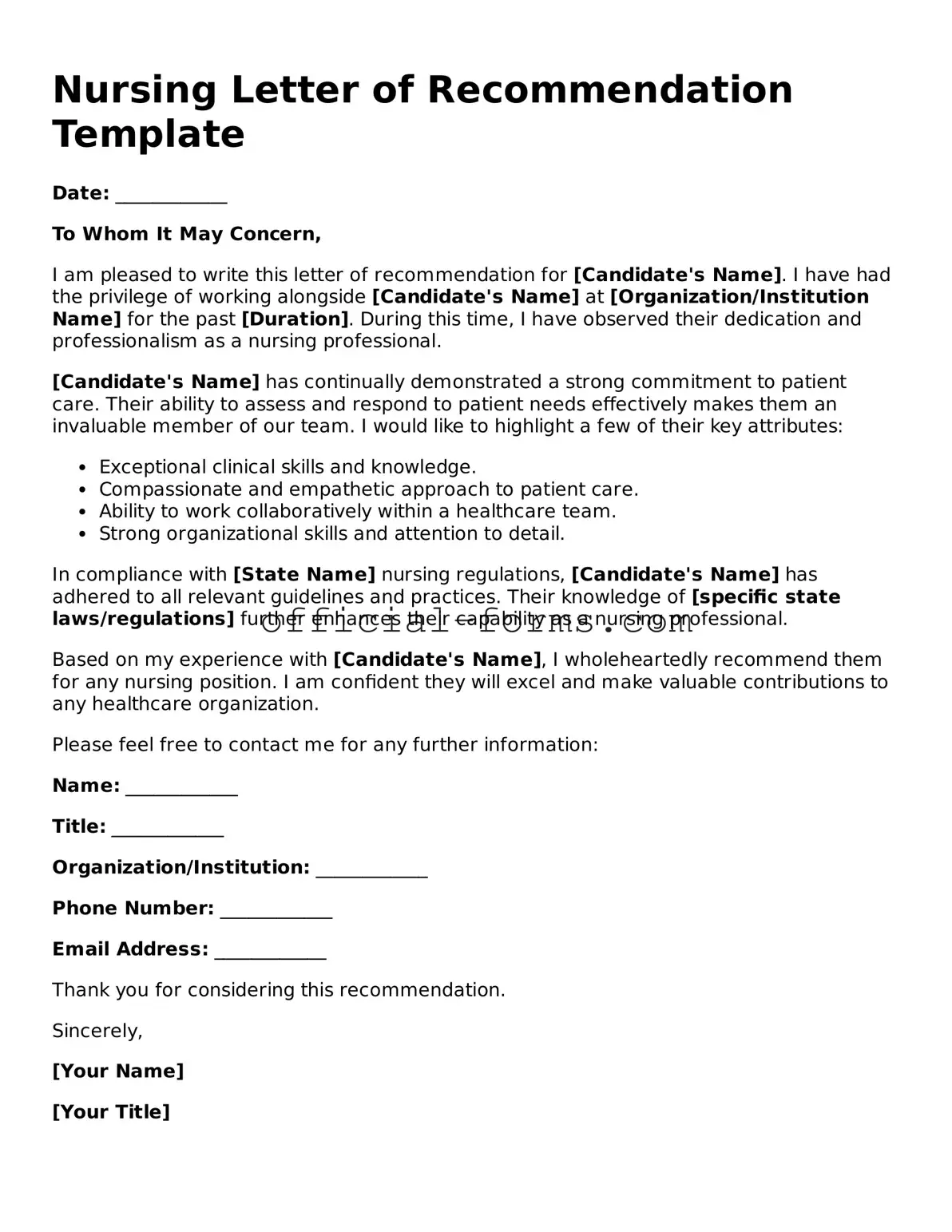When filling out a Nursing Letter of Recommendation form, many individuals inadvertently make mistakes that can affect the outcome of the application. One common error is not providing specific examples of the candidate's skills and experiences. Generic statements may seem safe, but they fail to showcase the unique qualities that set the applicant apart.
Another frequent mistake is overlooking the importance of professionalism in the tone and language used. The recommendation should reflect a respectful and positive attitude toward the candidate. Using casual language or slang can diminish the seriousness of the recommendation and leave a poor impression on the reader.
Some recommenders forget to tailor their letter to the specific nursing program or job the candidate is applying for. Each program or position may have different requirements or values. A one-size-fits-all approach can miss the mark, making it crucial to highlight relevant experiences that align with the desired qualities.
Additionally, failing to proofread the letter can lead to embarrassing typos or grammatical errors. These mistakes can distract from the content and make the recommendation appear rushed or careless. Taking the time to review and edit the letter ensures clarity and professionalism.
Another common pitfall is neglecting to include contact information. If the admissions committee has questions or needs further clarification, they should be able to reach the recommender easily. Omitting this information can hinder the candidate's chances of success.
Some recommenders may also underestimate the importance of their own credentials. Including a brief overview of their qualifications can lend credibility to the recommendation. This helps the reader understand why the recommender's opinion is valuable.
Lastly, not adhering to the submission guidelines can be detrimental. Each program may have specific requirements regarding length, format, and submission methods. Ignoring these details can lead to disqualification or a negative impression of the candidate.
